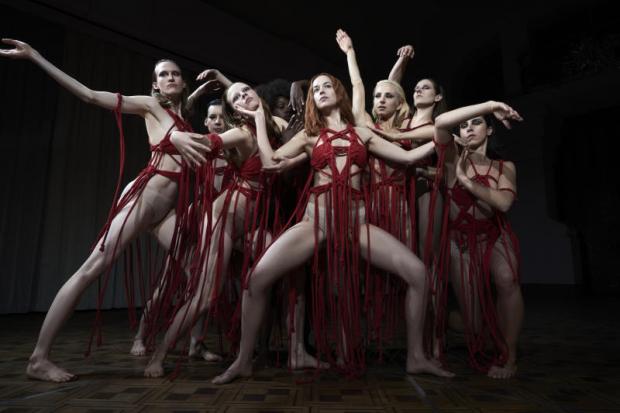The original 1977 Suspiria was a trashy bloodbath, an Italian giallo at its most lurid and disturbing -- a lair of maggots, murderers and witches. The remake, in cinemas this week, is high-trash Euro art house, more bourgeois and hipsterish -- a baroque nightmare whose danse macabre has been upgraded to fit the faces and forms of Dakota Johnson and Tilda Swinton. The new film has been directed by Italian Luca Guadagnino (Call Me By Your Name, A Bigger Splash, I Am Love) and shot by Thai cinematographer Sayombhu Mukdeeprom, whose 35mm work here is one of the film's high points.
At 152 minutes, Suspiria stretches itself a little too thin. Its attempt to give this psycho-trip a historical, political and even moral anchoring seems superfluous. The 1977 Suspiria was a nerve-jangler because it was stripped off all context; it's a psychedelic head-trip and what remains is hallucinatory sensation. The new film is what happens when an intelligent director takes on sensational B-movie material -- he exorcises it, tries to be clever and ends up with mixed results.
The compact plot of the original has been deconstructed and extended. Johnson plays Susie, a bright-eyed American girl who travels to Berlin to audition for a dance company run by a faculty of wizened harridans -- they're a coven of witches, it's revealed early on, who use the school as a front to recruit nubile girls unwittingly into their cult. That basic, contained storyline is given a political background: Berlin is divided and, on the week that Susie arrives, a group of Palestinian hijackers have seized a Lufthansa plane and demanded that the German government release the Baader-Meinhof revolutionaries from prison.
The Dario Argento original takes place almost entirely in the spectral dance school. Here, Guadagnino seems to use the witch-infested school as the subconscious of the city, the id of post-war Germany -- troubled, divided and haunted.
As Susie dances her way into the lead role of the troupe's new show (a kind of pagan orgy resembling The Rite Of Spring), the witches giggle and hatch a bizarre plan to bring back one of their "mothers" through demonic possession and sacrificial murders. Susie is chosen to be the vessel and the teacher who'll prep her for the ritual is Madame Blanc (Tilda Swinton, channelling Pina Bausch, only more demented). In fact, Swinton plays three roles in Suspiria. Besides Blanc, she plays an old male psychiatrist who suspects that the dance school is hiding a dark secret while he broods over the fate of his wife whom he left during the war (another extension from the original). Then at the end, Swinton shows up in warts and toad skin, almost unrecognisable as, well, something you have to see for yourself.
The shock set pieces come on cue and are demented enough to please horror fans: physical torture, mummified half-corpses, flash-cut nightmares and helpless young women being tormented by demons, etc. Guadagnino keeps his largest supply of blood until the final sequence, a hyperbolic spectacle of art house grotesquerie taking place in a dungeon where pulpy terror and Berlin rave party meets modernist choreography. It's so extravagant, so over-the-top that you either admire it or chortle. This Suspiria isn't something that everyone will find entertaining, but it's audacious and uncompromising. With Halloween week saturated with typical horror fare, this is an atypical treat that will leave you soaked in a fountain of blood.
Suspiria
Starring Dakota Johnson, Tilda Swinton.
Directed by Luca Guadagnino.

